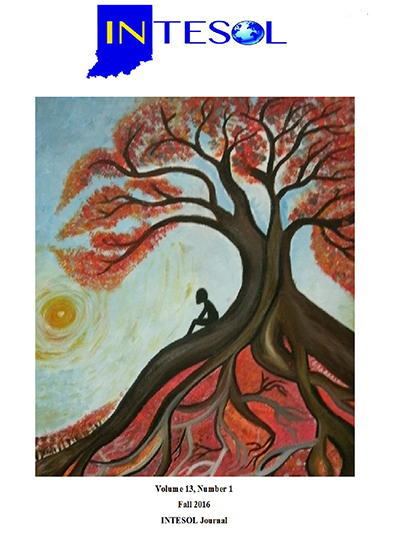The Influence of Vocabulary on Reading Comprehension in Dual Language Learners
Abstract
The connection between language and reading is well established in monolingual children but not well understood in dual language learners (DLLs) who learn Arabic, a Semitic language characterized by diglossia. This study examines the relationship between language (vocabulary) and reading comprehension in English-Arabic DLLs. Results indicate that vocabulary predict reading comprehension both within and across languages of DLLs. Recommendations for practicing teachers of DLLs are underscored.
References
August, D. & Shanahan, T. (Eds.) (2008). Developing reading and writing in second-language learners: Lessons from the report of the National Literacy Panel on language-minority children and youth. New York, NY: Routledge.
Bedore, L. M., Peña, E. D., García, M. & Cortez, C. (2005). How vocabulary size in two languages relates to efficiency in spoken word recognition by young Spanish English bilinguals. Language, Speech, & Hearing Services in Schools 36, 188-200.
Carlisle, J. F., Beeman, M. M., Davis, L. H., & Spharim, G. (1999). Relationship of metalinguistic capabilities and reading achievement for children who are becoming bilingual. Applied Psycholinguistics, 20, 459–478.
Cambell, J. R., Hombo, C. M., & Mazzeo, J. (1999). NAEP 1999 Trends in Academic Progress: Three Decades of Student Performance. Washington, D.C., U.S. Dept. of Education.
Cohen, J. (1989). SETCOR: Set Correlation Analysis: A supplementary module for SYSTAT and SYNGRAPH. Evanston, IL: SYSTAT.
Cummins, J. (1979). Linguistic interdependence and the educational development of bilingual children. Review of Educational Research, 49, 222–251.
Durgunoglu, A. (2002). Cross-linguistic transfer in literacy development and implications for language learners. Annals of Dyslexia, 52, 189-204.
Durgunoglu, A. & Goldenberg, C. (Eds.) (2011). Language and literacy development in bilingual settings. New York: Guilford.
Duursma, E., Romero-Contreras, S., Szuber, A., Proctor, P., Snow, C., August, D., & Caldero´n, M. (2007). The role of home literacy and language environment on bilinguals’ English and Spanish vocabulary development. Applied Psycholinguistics, 28, 171–190.
Ferguson, C. (1959). Diglossia. Word, 15, 325-340.
Genesee, F., Paradis, J., & Crago, M.B. (2004). Dual language development & disorders: a handbook on bilingualism and second language learning. Maryland: Paul H. Brookes Publishing Co.
Gillanders, C. (2007). An English-speaking prekindergarten teacher for young Latino children: Implications for the teacher-child relationship on second language learning. Early Childhood Education Journal, 35, 47-54.
Goldenberg, C., Hicks, J., & Lit, I. (2012). Teaching young English Learners. In R. Reutzel (Ed.) Handbook of research-based practice in early childhood education (140-160). Guilford Press.
Kieffer, M. J., & Lesaux, N. K. (2012). Development of morphological awareness and vocabulary knowledge in Spanish-speaking language minority learners: A parallel process latent growth curve model. Applied Psycholinguistics, 33(01), 23–54.
Li, T, McBride-Chang, C., Wong, A., & Shu, H. (2012). Longitudinal predictors of spelling and reading comprehension in Chinese as an L1 and English as an L2 in Hong Kong Chinese children. Journal of Educational Psychology, 104(2), 286-301.
MacGinitie, W.H., MacGinitie, R.K., Maria, K. & Dreyer, L.G. (2000). Gates-MacGinitie Reading Tests –Directions for Administration (4th Ed.). Rolling Meadows, IL: Riverside.
Miller, J. M., Heilmann, J., Nockerts, A., Iglesias, A., Fabiano, L., & Francis, D. J. (2006). Oral language and reading in bilingual children. Learning Disabilities Research and Practice, 21, 30-43.
Nagy, W. E. (2005). Why vocabulary instruction needs to be long-term and comprehensive. In E. H. Hiebert & M. L. Kamil (Eds.), Teaching and learning vocabulary: Bringing research to practice (pp. 27–44). Mahwah, NJ: Erlbaum.
Nagy, W. E., Garcia, G. E., Durgunoglu, A. Y., & Hancin-Bhatt, B. (1993). Spanish English bilingual students’ use of cognates in English reading. Journal of Reading Behavior, 25(3), 241–259.
Nagy, W., & Townsend, D. (2012. Words as tools: Learning academic vocabulary as language acquisition. Reading Research Quarterly, 47(1), 91-108.
National Center for Education Statistics (2009). The Nation's Report Card: Reading 2009 (NCES 2010–458). Institute of Education Sciences, U.S. Department of Education, Washington, D.C.
National Center for Education Statistics (NCES, 2015). The condition of education 2015 (NCES 2015-144), English Language Learners.
Proctor, C. P., August, D., Carlo, M. S., & Snow, C. (2006). The intriguing role of Spanish language vocabulary knowledge in predicting English reading comprehension. Journal of Educational Psychology, 98, 159–169.
Saiegh-Haddad, E. (2003). Linguistic distance and initial reading acquisition: The case of Arabic diglossia. Applied Psycholinguistics, 24, 431-451.
Saiegh-Haddad, E., & Geva, E. (2008). Morphological awareness, phonological awareness, and reading in English-Arabic bilingual children. Reading and Writing: An Interdisciplinary Journal, 21, 481-504.
Snow, C., Burns, M., & Griffin, P. (1998). Preventing reading difficulties in young children. Washington: National Academy Press.
U.S. Department of Education, Institute of Education Sciences, National Center for Education Statistics, National Assessment of Educational Progress (NAEP), 2007 Reading Assessments.


